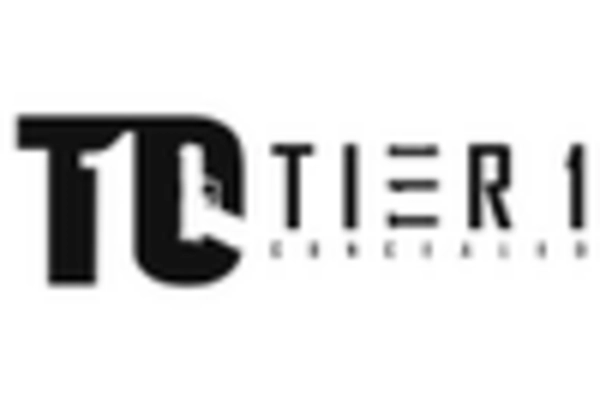Government Incentives
Government initiatives aimed at promoting electric mobility are playing a crucial role in the growth of the electric kick-scooter market. Various states and municipalities are implementing incentive programs, such as tax credits and subsidies, to encourage the adoption of electric vehicles, including scooters. For example, some cities offer rebates for purchasing electric kick-scooters, making them more financially accessible to consumers. Additionally, infrastructure investments in charging stations and dedicated lanes are being prioritized, further supporting the market's expansion. As these government incentives continue to evolve, they are likely to stimulate demand, making electric kick-scooters a more viable option for everyday transportation.
Environmental Awareness
Growing environmental consciousness among consumers is significantly influencing the electric kick-scooter market. As awareness of climate change and pollution rises, individuals are increasingly seeking eco-friendly transportation alternatives. Electric kick-scooters produce zero emissions during operation, making them an attractive option for environmentally conscious consumers. Recent surveys indicate that over 60% of urban residents in the US prefer sustainable transport solutions. This shift in consumer behavior is prompting manufacturers to innovate and enhance the sustainability of their products. The electric kick-scooter market is thus positioned to benefit from this trend, as more individuals opt for scooters over traditional vehicles, contributing to reduced carbon footprints and promoting greener urban environments.
Urban Mobility Solutions
The electric kick-scooter market is experiencing a surge in demand as urban areas seek efficient mobility solutions. With increasing congestion in cities, electric kick-scooters offer a practical alternative for short-distance travel. According to recent data, urban populations in the US are projected to grow by 10% by 2030, leading to a greater need for sustainable transportation options. This trend is further supported by city planners who are integrating electric kick-scooter infrastructure into public transport systems. The convenience and accessibility of these scooters appeal to commuters, particularly in metropolitan areas, thereby driving growth in the electric kick-scooter market. As cities invest in dedicated lanes and parking spaces, the market is likely to expand, catering to a diverse range of users, from students to professionals.
Technological Integration
The integration of advanced technologies is reshaping the electric kick-scooter market. Innovations such as smart connectivity, GPS tracking, and mobile app integration are enhancing user experience and safety. For instance, many scooters now feature real-time tracking and geofencing capabilities, allowing users to locate available scooters easily. Furthermore, the incorporation of IoT technology enables fleet operators to monitor usage patterns and optimize maintenance schedules. As of 2025, the market for smart electric kick-scooters is expected to grow by 15% annually, driven by consumer demand for enhanced features. This technological evolution not only improves the functionality of electric kick-scooters but also attracts a tech-savvy demographic, thereby expanding the market's reach.
Changing Consumer Preferences
The electric kick-scooter market is witnessing a shift in consumer preferences towards more flexible and convenient transportation options. As lifestyles evolve, individuals are increasingly favoring on-demand mobility solutions that cater to their dynamic schedules. The rise of shared mobility services has also contributed to this trend, with many consumers opting for scooter-sharing programs as a cost-effective alternative to ownership. Recent data suggests that approximately 30% of users in urban areas utilize shared electric kick-scooters regularly. This changing landscape indicates a growing acceptance of electric kick-scooters as a mainstream mode of transport, thereby driving market growth and encouraging further investment in this sector.

















Leave a Comment